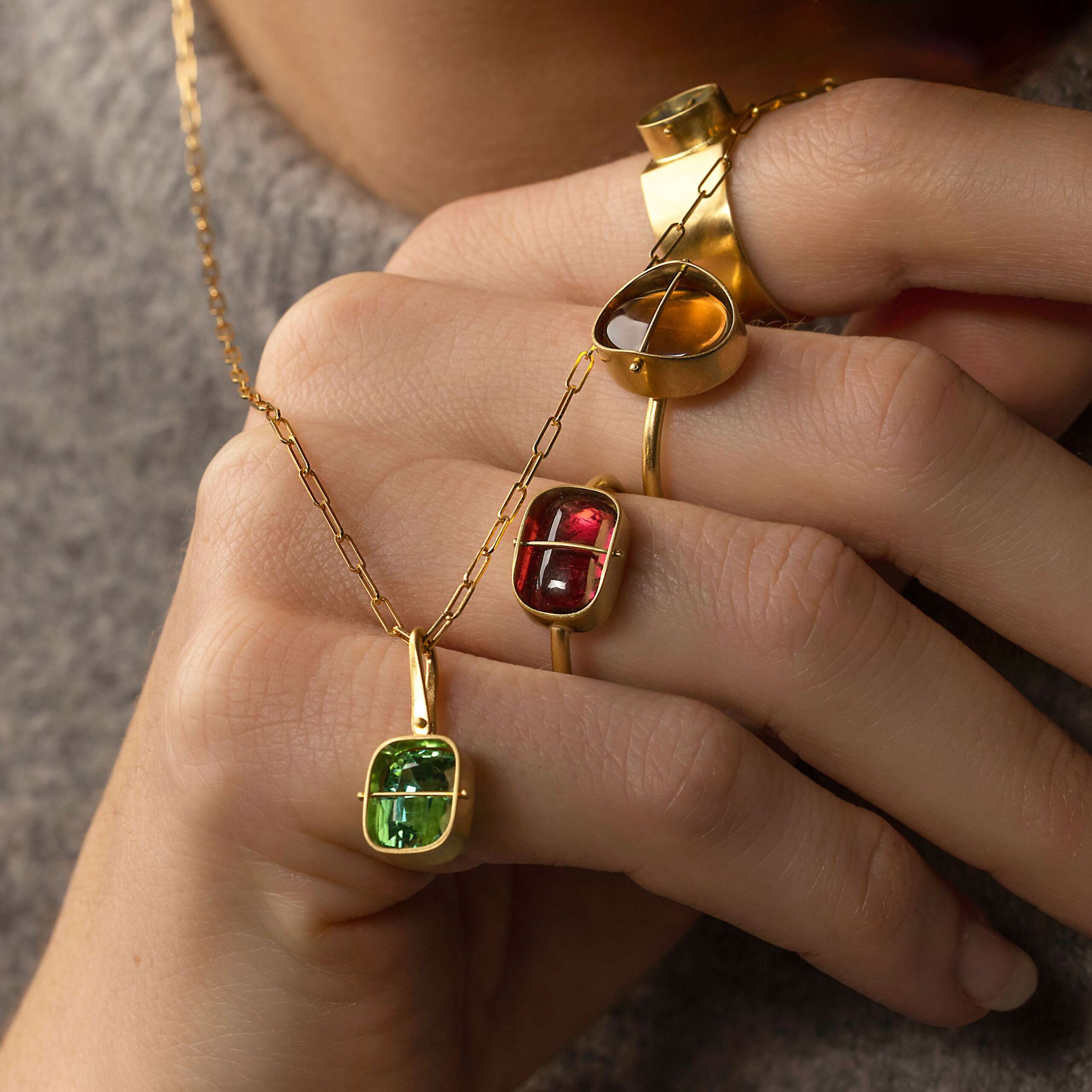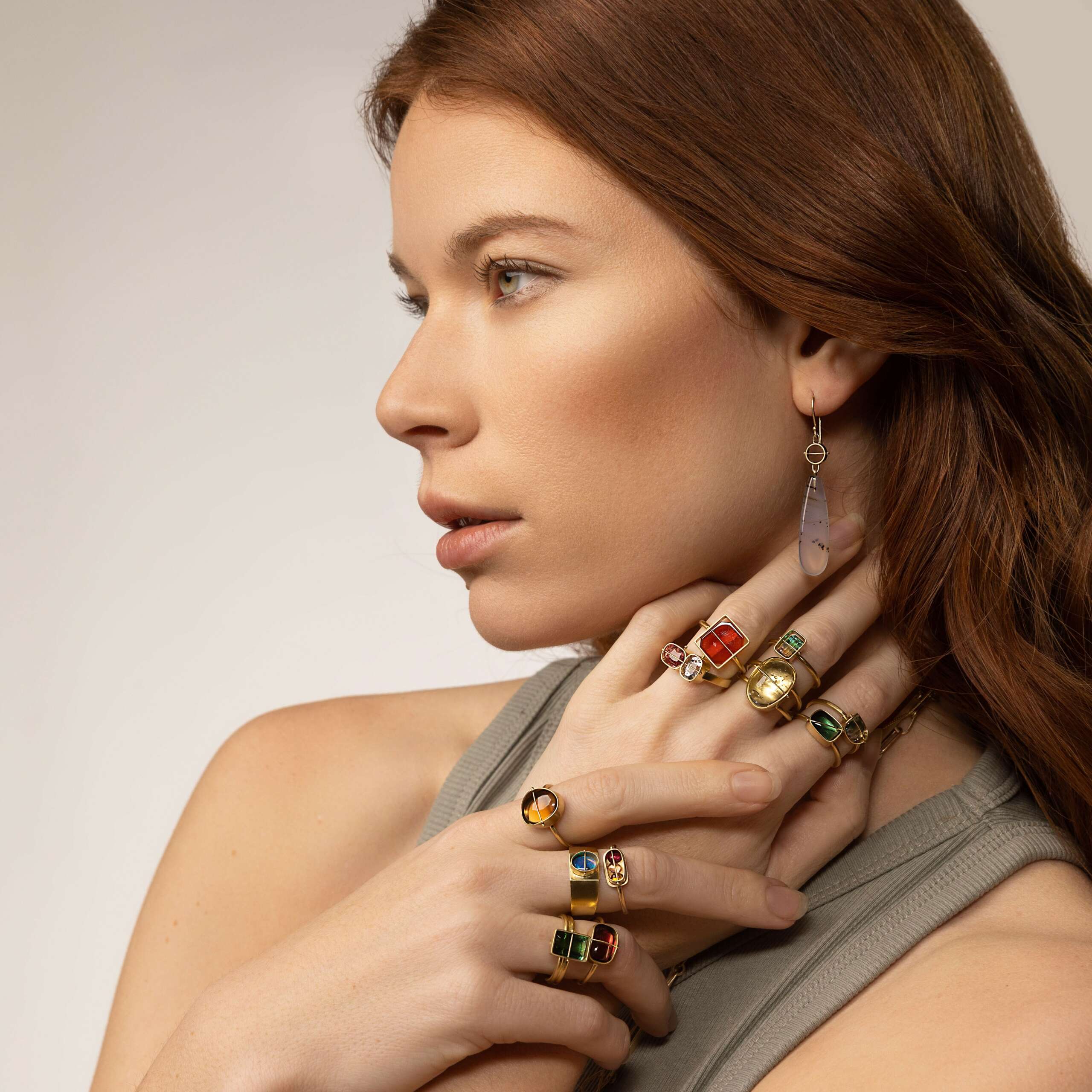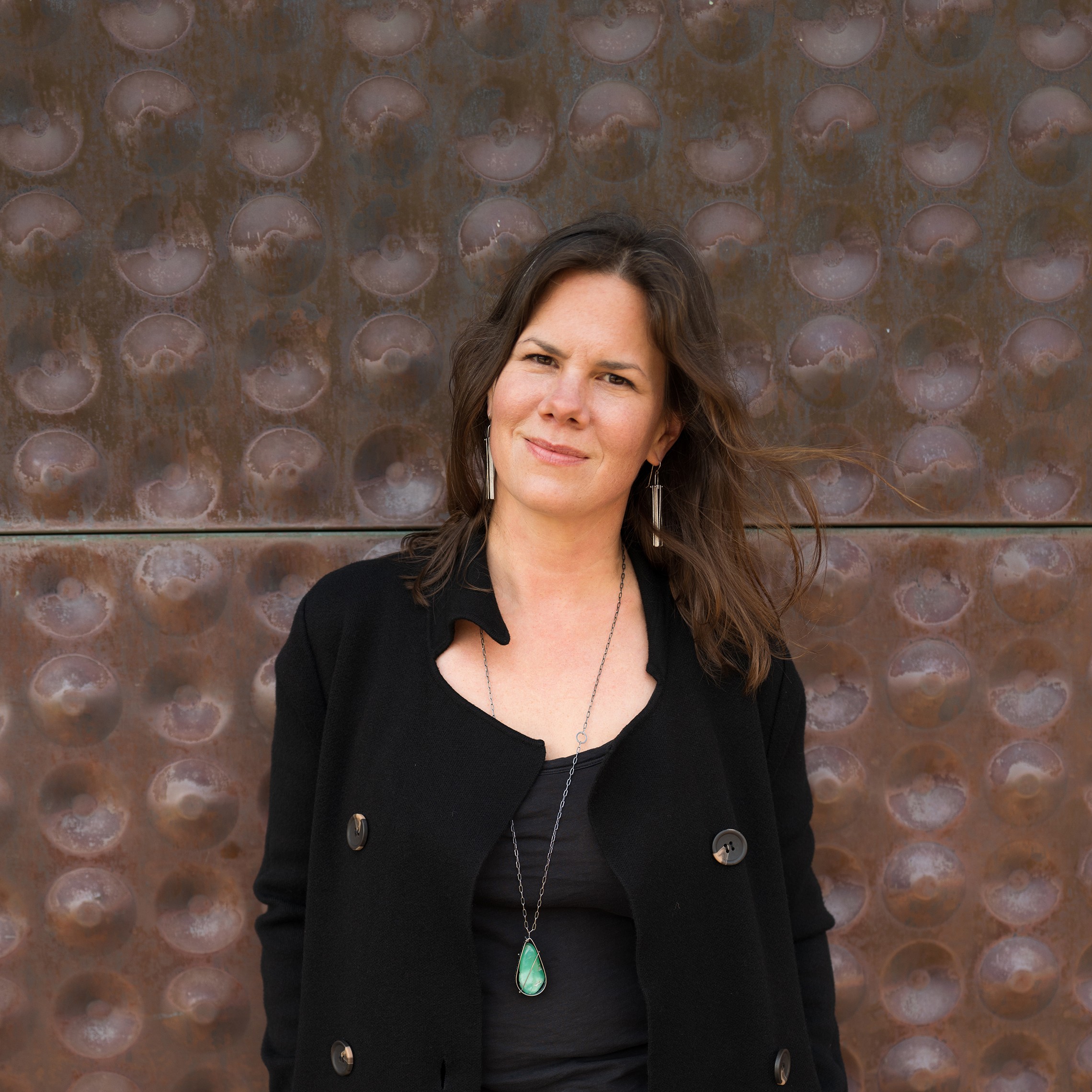We recently connected with Hilary Finck and have shared our conversation below.
Hilary, thanks for taking the time to share your stories with us today Have you been able to earn a full-time living from your creative work? If so, can you walk us through your journey and how you made it happen? Was it like that from day one? If not, what were some of the major steps and milestones and do you think you could have sped up the process somehow knowing what you know now?
I restarted my jewelry business in 2018 after a 10-year hiatus studying and working in the environmental industry. Realizing how unhappy I was working in a cubicle in a fairly uncreative (yet very important!) field, I dreamt of making jewelry again full-time. I hired a creative coach to help me transition from my current job back into jewelry design because the landscape had changed so drastically since the last iteration of my business in the mid 2000s. There was now Facebook, Instagram, and Pinterest, user-friendly e-commerce website platforms, newsletter email platforms, and more — none of which I used. She helped set me up for success and then the rest was up to me. I hustled more than I’ve ever hustled before. I reconnected with stores that used to carry my work and contacted a good portion of my old clientele. I started a mailing list of friends and family and colleagues. I went full-throttle into Instagram, which was scary to put myself out there in such a public way, but was immediately evident that this was the key. I can say with all honesty that I wouldn’t be where I am today without Instagram. It’s how new clients and retailers find me. It’s how I find community in the industry. The first two years were financially lean for sure, and I had major FOMO while I sat out from hanging with my friends at our usual dinner spots. But, I kept my head down and tirelessly worked on my business because I knew that the alternative was the dreaded cubicle. Then COVID hit and I thought it would all be over, but luckily I was always able to go to work safely in my studio and make jewelry, which helped to keep me sane through the whole ordeal. Because everyone was staying home — not going out to eat or taking vacations — my clientele had tons of excess income and the sales started coming in, and they only increased as the lockdowns continued.
It became clear to me that my business needed to not only be a sustainable income source, but that if executed correctly it could be a successful enough to actually start saving money and planning for the future. While there are plenty of non-creative tasks I take care of to keep my business running, it’s completely worth it. There will always be that little doubting voice in the back of my mind when I have a slow month or two, but the more positive voice that knows that my jewelry business will thrive speaks louder now. There’s nothing more satisfying than being able to support myself and my son through my art, and I’m grateful to every client, friend, family member, and Instagram supporter who has helped to make this dream a possibility.



Hilary, before we move on to more of these sorts of questions, can you take some time to bring our readers up to speed on you and what you do?
I took my first jewelry design class in Fort Collins, Colorado while taking a year off from the veterinary medicine program at CSU. From the first moment I manipulated metal, I knew this was my medium and after several classes it was clear that I wasn’t going to be a veterinarian after all. I loved the rigid flexibility of metal, the way it forms and moves direction with a hammer, and the way you could join pieces to make pretty much anything. It became my passion and I switched majors and spent the next three years taking classes and making jewelry.
I moved to San Francisco, CA in 2000 and quickly started my own studio and found some local stores to carry my work. Fast forward to today and I am the owner/designer/maker of Hilary Finck Jewelry. I make all the jewelry myself in my sunny San Francisco studio. I’m a fabricator at heart. Rarely do I carve with wax and have pieces cast. I like being able to build a piece and see it come to fruition immediately. I specialize in one-of-a-kind pieces with bright, colorful, and unique gemstones set in my signature Captured setting. I invented this setting years ago as a way to hold seashells and oddly shaped beach combing artifacts since traditional settings wouldn’t normally work on such objects. I was thrilled when I realized that this same type of setting, with one or two crossbars holding the stone in place, would transfer beautifully to gemstones. The Captured Collection was a game changer for my business and today I make rings, necklaces, bracelets, and earrings in this style with gold mostly and some silver. I do a fair amount of custom work and many of my custom clients are gemhounds who have been looking for a unique way to set their treasured gemstones. My Hand Hammered Collection – which consists of all metal pieces with no gemstones – was my first love, and many of the pieces in that Collection are classics that I’ve been making and improving upon for years now. Hand hammering is my truest expression of metalsmithing, and pieces from this Collection are the ones I personally wear everyday. The jewelry in my Captured Collection and Hand Hammered Collection compliment each other and look great when worn together. More than anything it’s important for my clients and fans to know that each piece I make comes from my hand. Each piece is full of personality and tiny irregularities that only make the piece more special. I celebrate handmade craft and originality through my art.


We’d love to hear the story of how you built up your social media audience?
Oh, social media – my biggest love-hate relationship. It took awhile to gain traction on Instagram, which is my main social media platform. When I first started I posted just about everything I made – even the bad stuff. (You can always archive posts that you’re not so proud of after the fact.) I began posting stories of my process – steps in the making of the piece, which I quickly found that people love to see. I’ve never been one to make process videos because, well, I’m a jewelry designer, not a videographer. I try stay true to what I can handle and what I feel comfortable posting on the platform. That helps keep the internal pressure in check that sometimes tells you that you aren’t doing enough. Do what you can and stay authentic to yourself and your brand.
Creating a community on social media is critical. Start to follow others in your industry and in industries that inspire you or are related to yours. Comment on their posts and send DMs introducing yourself. Be kind and supportive to your community and keep negative comments to yourself. (Don’t be afraid to block someone or delete mean comments, and let those go with a grain of salt.) In your Stories, share what inspires you, and tag those accounts to “cross-pollinate”. Instagram loves that and it helps you be seen by more accounts.
Photography and a consistent aesthetic is key – that helps to build your brand. It took me a couple years to nail down the overall aesthetic that you see today on my profile. It’s simple, clean, uncluttered, and does not detract from the work. The work is center stage. I prefer close-up images with the jewelry cropped in close to help increase the visual impact when it comes across someone’s feed. Bright and colorful images always do best so if you need a post to boost your viewership, make it colorful!
Be consistent in how often you post or add stories. You don’t have to post everyday, but maybe post every other day. I try to do my posts on Tuesday, Thursday and Saturday and/or Sunday mornings. I’m not always on schedule, and I’ve learned that it’s ok to allow yourself a break if you need it. It’s important to not get burned out – you can’t let the platform rule you.
Most importantly, have fun with it. All of this advice is pretty much how I built my following. It’s what I’ve learned during the past 5.5 years of running a business with my main marketing channel being Instagram.



Have any books or other resources had a big impact on you?
I’m a true believer in seeking community with other artists, whether they are in your field or not. Working artists are entrepreneurs full of insight and advice, and are generally a lot of fun! I’ve joined industry groups such as the Women’s Jewelry Association and was President of the Metal Arts Guild for a couple of years. I’m part the Stay Gold Collective, which is a group of emerging jewelry designers led by Liz Kantner that helps members navigate all aspects of the jewelry industry. These organizations have been critical to my understanding of the industry and to making important connections.
The business side of things – actually running a successful business – does not always come easily to artists, so I decided to take a business planning class at the local Renaissance Entrepreneurship Center. The course is full of operational, marketing, and financial advice and support. It helped me discover basic but crucial aspects of my business – mostly in terms of understanding budgets and finances. And, this organization provides mentorship to graduates, which helped me secure low-interest business loans and create needed contracts for business relationships. As a full-time artist, it’s necessary to understand how to run a business that will succeed financially.
Contact Info:
- Website: hilaryfinck.com
- Instagram: @hilaryfinckjewelry
Image Credits
Model: Annie Buest; Photographer: Michael Sullivan (These are only for the images with the jewelry model.)


